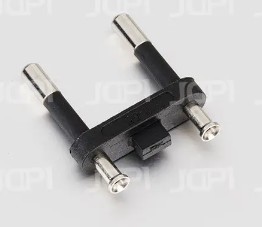If you are setting up a new electrical system, choosing a Brazilian plug is something you should not overlook. It's a very important component and a great way to keep your device safe.
127/220V power supply voltage
It is a good idea to use 127/220V electrical outlets in Brazil if you are traveling to the country. However, it is also possible that the voltage you are receiving is not compatible with the appliance you are using. However, using a voltmeter may prove to be a useful tool. It will tell you if your hair dryer will work with a particular outlet.
Likewise, dual voltage rated devices will show an input range of 110 to 240 V on their display. Also, you don't need voltage transformers to operate your electronics on both voltages.
During the 1990s, several different types of plugs were used in Brazil. One is the very funky looking Europlug. However, the Brazilian government decided it was time to standardize. In 2007, the country joined the IEC 60906-1 bandwagon. The resulting standard has two variants - NBR 14136:2002 and NBR 6147:2002. The first is the compliant version, while the latter is the non-compliant version.
The IEC 60906-1 standard has an interesting name - the acronym is Norma BRasileira 14136. The standard is based on the IEC 60906-1 standard, but the pin ratings or dimensions do not conform to the standard.
Standard three-pin plug
In the late 1990s, Brazil began using a non-compliant version of the IEC 60906-1 standard known as NBR 14136. The new Brazilian plug standard was adopted in 2002 and is now based on international directives and standards. It unifies all systems available in Brazil and provides users with greater security.
The IEC 60906-1 standard is a system for household socket outlets. It consists of a single 16 A rating with 4.5 mm leads. It encourages countries to adopt one type of plug for all applications. In addition, it recommends a plug for 120 V connections.
Custom length and shielded Brazilian power cords



 English
English Deutsch
Deutsch














